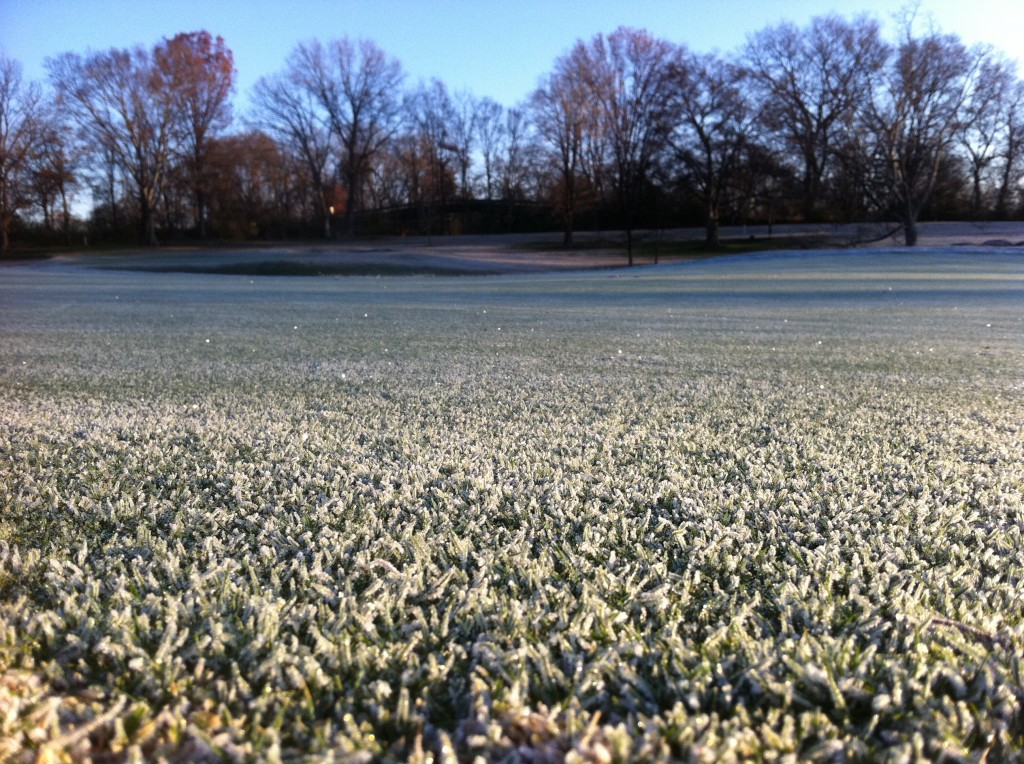We are reaching that time of year when frost and freeze delays determine the first tee time on the golf course. Opening the course for play too early will negatively impact the health of the greens. When a sunny warm day is upon us, a delay makes it harder for golfers to understand why greens can still be frosted or frozen or why delays are still in effect after the frost or freeze delay has expired. Below are a few of the most commonly asked questions about a frost or freeze delay.
Why does frost cause a problem?
Frost basically is frozen dew on the plant and forms when temperatures are near or below freezing. The ice crystals that form on the outside of the plant also form inside the plant’s cell structure making the plant very brittle. When the plant is crushed the cells in the plant are also crushed destroying its ability to function normally.
How can a footprint kill?
When a footprint is made on a frosted plant the ice crystals in the plant collapse and later in the day the footprints become evident. After the damage has occurred the result can last for several months with dead turfgrass and a path of brown footprints.
What is freeze delay?
A freeze delay occurs when temperatures dip below the freezing point and results in the entire green freezing solid.
How can a freeze delay damage?
The greatest damage occurs to turf during the thawing period when the top layer of soil thaws and a frozen layer remains deeper in the soil. The thawed layer will be saturated with water and becomes spongy. Walking on the turf with this condition will cause footprints and can cause the turf to become uneven. Severe turf damage can result from shearing off the roots as the turf moves above the frozen layer. This damage will result in weaker turf in the spring when conditions are favorable to grow.
It is difficult to explain why thawing greens should not be played on during a warm sunny day following very cold weather. Golfers are eager to return to the course on the nice days following long periods of cold weather. All greens usually do not thaw at the same time and shaded greens are last to thaw. Shaded greens are more difficult to predict. If a shaded green happens to be one of the first holes of a nine, delay times will be longer, even when the later holes have already thawed.
*Dr. Leon Lucas, Carolinas Golf Association
Why are we still delayed after the frost and frozen greens have thawed?
After a delay has expired there is still time needed for the golf course maintenance staff to perform the daily jobs like mowing greens, setting up the hole locations, and raking bunkers, and having enough head start to stay ahead of the first tee time is crucial.

